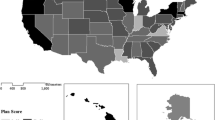Abstract
Emergency actions to prepare for hurricanes often require more time than is available from official public warnings. This means that the preparedness official must decide not onlywhat to do butwhen to do it. The action decision system, described here, developed for use in the State of Florida, reformats the hurricane track forecast, a 72-h projection, prepared at the National Hurricane Center in Miami, to specify the probability of a strike at each of 12 vulnerable coastal communities, and then normalizes the value in terms of a composite of probabilities computed for historic hurricanes that struck the respective communities. The normalization, a ratio of the two probability values, current and historic, expressed as a percentage is defined as the level of risk. When this level reaches or exceeds 100% the risk level is defined as critical and the system recommends that emergency actions to prepare begin immediately.
The system is founded upon individual hurricane climatologies and decision procedures that are tailored for use at each community. The action recommendations generated by the risk analyses with a 93% level of confidence relieve the preparedness official of the need to make meteorological decisions in timing evacuations and other critical measures, even when these must begin before official hurricane warnings are received.
Similar content being viewed by others
Literature cited
Appleman, H. S. 1962. Estimates of the probable operational critical wind speeds affecting an air base during the passage of a tropical cyclone. AWS-TR164, AWS “MATS,” US Air Force.
Brand, S., and J. W. Bleloch. 1976. Haven studies Buckner Bay and Sasebo: Typhoon Harvey handbook. Naval Environmental Prediction Research Facility, technical paper 5–76.
Crutcher, H. L., C. J. Neumann, and J. M. Pelissier. 1982. Tropical cyclone forecast errors and the multimodal bivariate normal distribution.Journal of Applied Meteorology 21:978–987.
Hope, J. R., and C. J. Neumann. 1968. Probability of tropical cyclone induced winds at Cape Kennedy. Technical memorandum WBTM 505-1, Weather Bureau, ESSA, US Department of Commerce, Washington, DC. 67 pp.
Hope, J. R., and C. J. Neumann. 1970. An operational technique for relating the movement of existing tropical cyclones to past tracks.Monthly Weather Review 98:925–932.
Jarrell, J. D. 1978. Tropical cyclone strike probability forecasting. Final report to NEPRF (Science Applications, Inc., contract N00228-C-3127).
Jarrell, J. D., S. Brand, and P. F. Crumpe. 1984. Tropical cyclone estimates: where are we?In Proceedings of 15th AMS conference on hurricanes and tropical meteorology, Miami, Florida, January. Available from A.M.S., 45 Beacon Street, Boston, MA 02108.
Kimball, S. J. 1958. Estimating the probable hurricane force winds affecting an air base. AWS-TR-105-146, AWS “MATS.”
Neumann, C. J., and M. B. Lawrence. 1973. Statistical-dynamical prediction of tropical cyclone motion (NHC 73). NOAA technical memorandum NWS SR-69. 34 pp.
Sheets, R. C. 1984. National Weather Service Hurricane Probability Program. Proceedings of 15th AMS conference on hurricanes and tropical meteorology, Miami, Florida, January.
Simpson, R. H. 1984. A risk analysis and preparedness decision system for use by coastal communities. Proceedings of 15th AMS conference on hurricanes and tropical meteorology, Miami, Florida, January. Available from A.M.S., 45 Beacon Street, Boston, MA 02108.
Author information
Authors and Affiliations
Additional information
The work that provided the basis for this publication was supported by funding under a Cooperative Agreement with the Federal Emergency Management Agency. The substance and findings of the work are dedicated to the public. The authors are solely responsible for the accuracy of the statements and interpretations contained in the publication. Such interpretations do not necessarily reflect the views of the government.
Rights and permissions
About this article
Cite this article
Simpson, R.H., Hayden, B., Garstang, M. et al. Timing of hurricane emergency actions. Environmental Management 9, 61–69 (1985). https://doi.org/10.1007/BF01871445
Issue Date:
DOI: https://doi.org/10.1007/BF01871445




